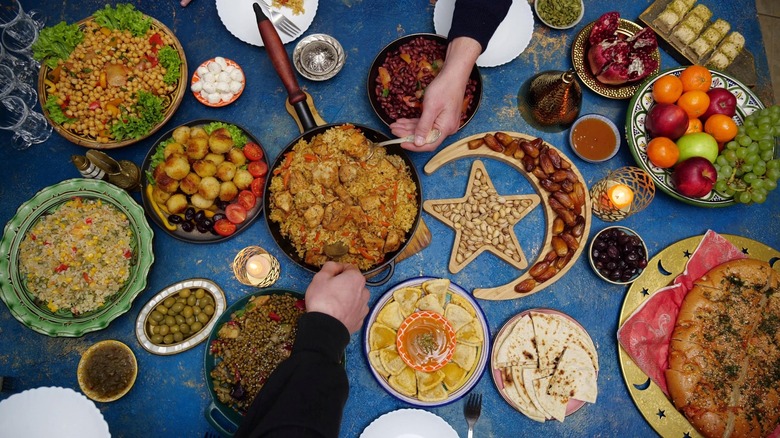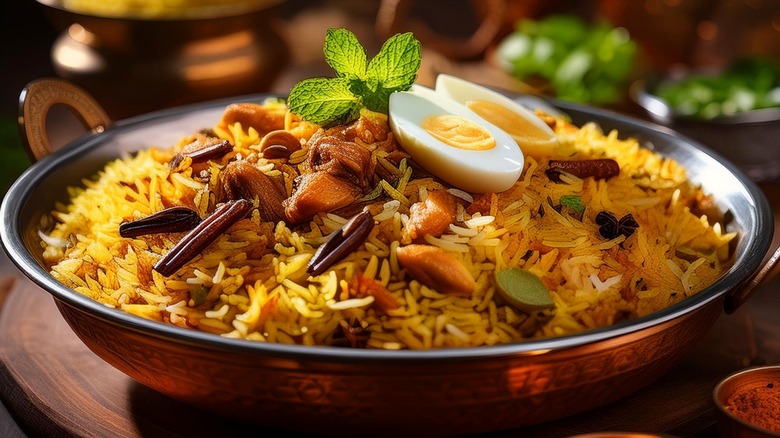What's Typically Eaten During Ramadan?
With the holy month of Ramadan quickly approaching, Muslims around the world will soon be fasting throughout the day. One of the five pillars of Islam, along with prayer and being charitable, Muslims fast during Ramadan to strengthen their modesty and spirituality. Between sunrise and sunset, no food or water is to be consumed, which makes the meals savored in the meantime all the more special.
The suhoor meal is eaten before dawn and centers on foods that will help sustain a person while they fast for sometimes 15 hours. They are hearty but not heavy, as folks don't want to feel bloated throughout the day. Fresh fruit and veggies are suhoor staples, and things like coconut cinnamon oatmeal with dates and hummus avocado toast provide those observing Ramadan with much-needed energy while fasting. Eggs and cheeses are popular suhoor options, as are various types of bread. Plenty of water is also consumed to help folks stay hydrated.
Those energy-packed foods help get Muslims to the iftar, the meal eaten after sunset. Many start slow with a few dates and some vegetable soup before moving on to more substantial dishes like fried chicken and fattoush, a vegetable salad with pita bread. Lamb is a classic part of the Easter dinner table, but it can also be an iftar staple in the form of kabobs or lamb biryani served with basmati rice.
Ramadan food choices can vary by region
Middle Eastern Ramadan meals might look quite different than the cuisine eaten in Europe or North America. While certain staples like dates and fresh vegetables are typically consumed by Muslims worldwide during Ramadan, other dishes can vary depending on a person's location. In Malaysia, one might be treated to beef rendang, a spicy braised dish made with coconut milk. Egg bhurji is a take on scrambled eggs popular in Pakistan, whereas sweet soy sauce chicken may be enjoyed at iftar in Indonesia.
In the United States, observers have an abundance of choices for food. Instant noodles and frozen chicken nuggets or sausages are popular options. Although many choose to cook dishes at home, it isn't against the rules to order food for a Ramadan meal.
As staying hydrated is a constant concern during Ramadan, scores of tasty beverages are also consumed during suhoor and iftar. Juices like Jallab (a blend of molasses, dates, and rose water) are popular in the Middle East. Muslims in various regions like to drink Rooh Afza, a spiced syrupy beverage that hydrates while simultaneously satisfying the desire for something sweet. After all, food and drink consumed during Ramadan are meant to sustain an individual while they fast throughout the day, but that doesn't mean the cuisine can't be tasty.

